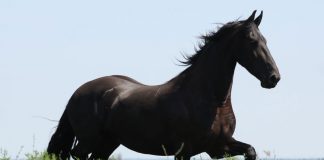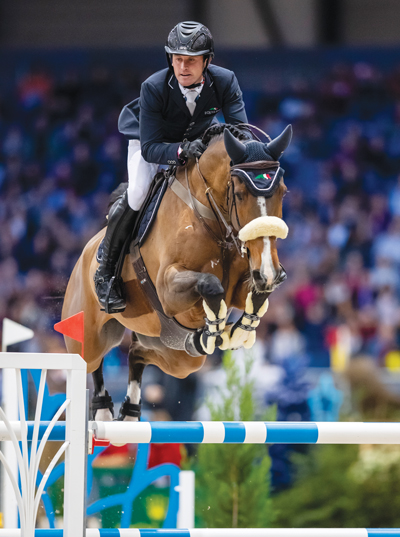
Despite fighting a number of regional conflicts over the past millennium and ultimately losing two World Wars, Germany has managed to produce four of the finest warmbloods in the world. And while the conflicts took a toll on all horse breeds throughout Europe, the skill and dedication of breeders in Germany not only saved these German warmbloods from near extinction, but actually improved them.
Although the Hanoverian, Holsteiner, Oldenburg and Trakehner all have firm German roots, each has its own unique history and tale of survival.
Oldenburg
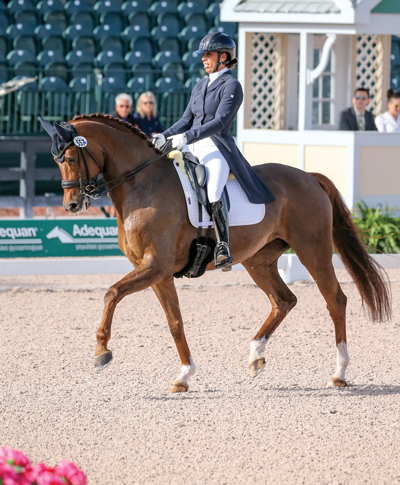
First bred in the Lower Saxony region of northern Germany in the former kingdom of Oldenburg, the Oldenburg breed was started in the 16th century from mares used as carriage horses and for farm work. Stallions of Andalusian, Turkish and Danish breeding were bred to these mares with the goal of creating a horse suitable for war. Over the next two centuries, they became favored by royalty, and were popular as carriage horses for nobility.
As with other European breeds, the Oldenburg began to be replaced by mechanized vehicles in the early 20th century. In the 1960s, German Oldenburg breeders began producing a modern version of the breed with the goal of creating a marketable sport horse. Thoroughbred stallions were bred to Oldenburg mares, and the resulting mares were then bred to Trakehners, Anglo-Arabians, Hanoverians, Holsteiners and other warmblood breeds.
The outcome is a breed known for its athletic abilities, particularly in the international world of show jumping. The breed is also making itself known in dressage at the upper levels.
Oldenburgs can vary in type depending on their breeding. They generally have long legs, a moderately sloped pelvis, and stand between 16 to 17 hands in height. They are most often seen in black, brown, chestnut, bay and gray.
Hanoverian
The Hanoverian was first developed in northern Germany in the medieval city of Hanover. The breed was created by King George II, the ruler of England and elector of Hanover, who used local mares and stallions of Spanish, Oriental and Neapolitan breeding. The Hanoverian was originally meant to be a carriage horse, a farm worker and, when needed, a warhorse.
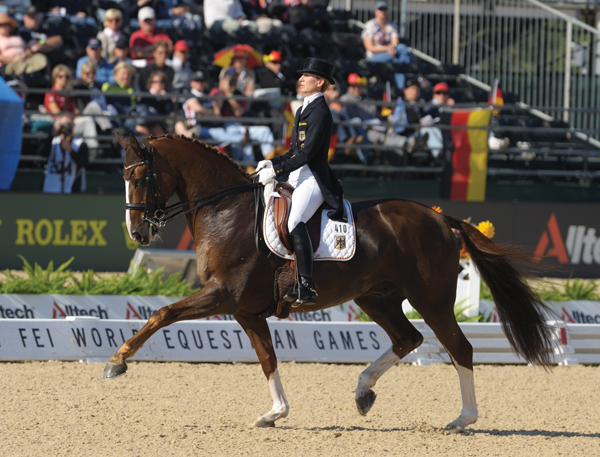
The Napoleonic Wars of the early 1800s took a toll on the European horse population, and the Stud at Celle, the state-sponsored Hanoverian breeding farm, was decimated during the conflict. Just before Napolean’s wars, 100 stallions lived at the Stud at Celle. When the fighting started, all had to be evacuated. After the wars were over, only 30 horses returned to the farm.
The breed slowly began making a comeback, but then suffered again during the two World Wars. The state breeding program miraculously survived both of the international struggles, and many of the horses that remained became the founding horses of the Hanoverian breed.
Standing 15.3 to 17 hands high, modern Hanoverians are strong, sturdy horses of large stature, and come in black, bay, chestnut, and gray. Today they are famous for their abilities as dressage horses and show jumpers, and they’ve made a name for themselves in the Olympics in both of these sports.
Holsteiner
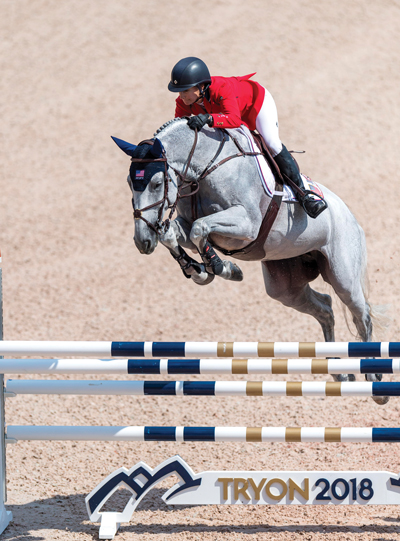
Considered the oldest breed in Germany, the Holsteiner began in the north German region of Schleswig-Holstein more than 700 years ago. First bred by monks, the Holsteiner was designed to be an elegant riding and carriage horse that also had the ability to work in the fields and carry soldiers into war.
After the Reformation of the 1500s, official breeding of the Holsteiner became a state operation. Individual breeders also contributed to the breed’s bloodlines and continued this work for centuries. The Holsteiner was valued throughout Germany for centuries and was used in the 1700s to create the Hanoverian breed.
As the need for more elegant driving horses took hold in Europe during the 1800s, Cleveland Bays and Yorkshire Coach Horses were introduced to the bloodlines. After World War II ended, Thoroughbred, Arabian and Selle Français blood was added to help breeders market the Holsteiner as a modern-day sport horse.
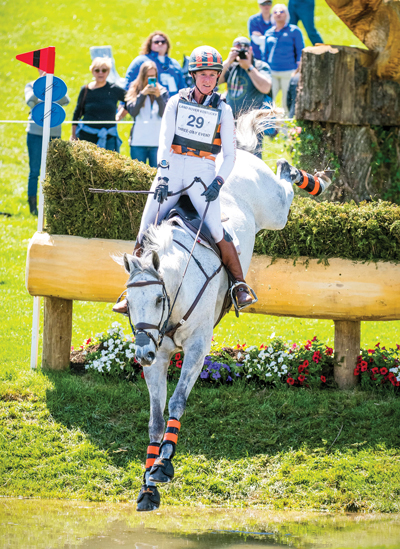
Today, Holsteiners are known for their exceptional talents in the international show jumping ring. In the U.S., they are also sought-after hunt seat and dressage mounts. They stand 16 to 17 hands in height, and have arched, high-set necks; powerful hindquarters; and strong backs. They come in brown, black, bay, gray and chestnut.
Trakehner
The Trakehner is closely associated with West Germany, and its roots go back to the 6th century B.C. The ancestors of today’s Trakehners were the mounts of the Scythians, great horse warriors who lived in what is now Eastern Europe. The breed as it stands today was created by the King of Prussia in the early 18th century from a local East Prussian breed called the Schwaike, a descendant of those Scythian horses.
The Trakehner was bred to be a military mount with great athleticism and endurance. The breed nearly perished during World War II when the Russian army began advancing on the Prussian village of Trakehnen in October 1944. The official government Trakehnen stud farm was seized by the Red Army, and the horses were shipped to Russia.
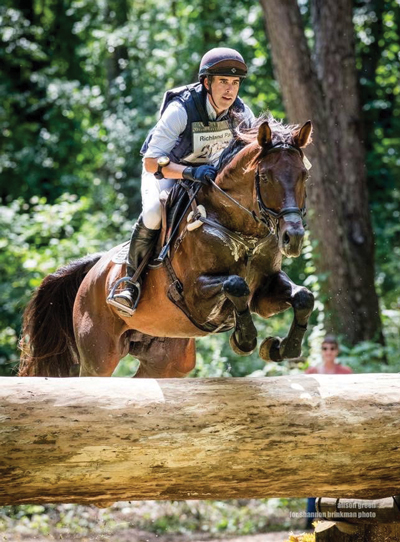
A few months later, the Russians broke through the last of the German lines, and private Trakehner breeders began to flee toward Allied-occupied West Germany in an attempt to escape Russian rule. Taking 800 of their horses with them, they embarked on what is known as “The Trek.” Men, women and children of all ages struggled through the deep snow and freezing temperatures with Trakehners pulling wagons filled with supplies.
The Trek lasted two-and-a-half months and covered more than 600 miles. By the time the surviving Prussians and their Trakehners reached West Germany, only 100 horses were left. Only the hardiest ones had survived.
Dedicated breeders began working to revive the Trakehner’s numbers after the war ended. It took decades, but by the 1980s, three state-supported Trakehner stud farms were operating. Thoroughbred and Arabian blood was added to help refine the breed and expand the gene pool.
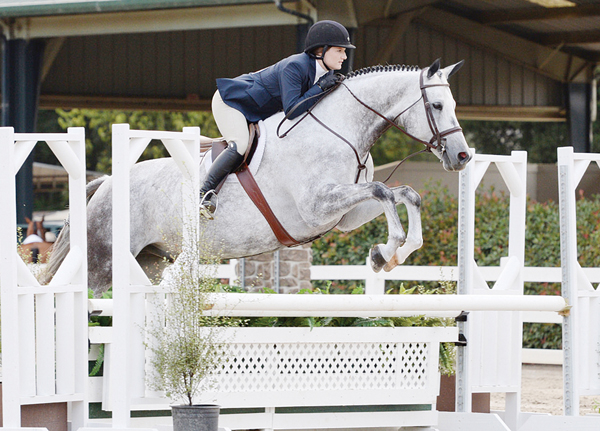
Today, the Trakehner is an elegant German warmblood, large and well-muscled. Standing from 16 to 17 hands in height and coming in all solid horse colors, Trakehners are best known for their talents in Olympic-level jumping and dressage.
This article about German Warmbloods appeared in the June 2020 issue of Horse Illustrated magazine. Click here to subscribe!




